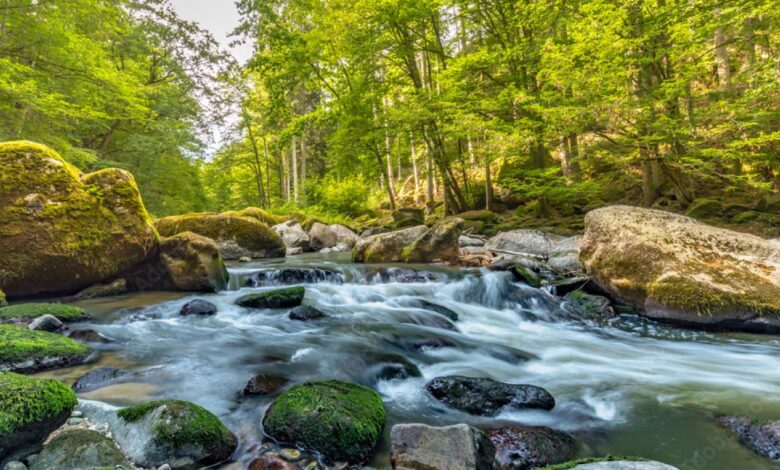Something Shared by Wetlands and Woodwinds: The Magic of Sound

Wetlands and woodwinds may seem like an unlikely pair, but they share a fascinating commonality: the role of sound in their environments. Understanding this shared characteristic enhances our appreciation of these diverse subjects and underscores the interconnectedness of nature and art. In this article, we’ll explore the unique features of wetlands and woodwinds, delve into their shared trait of sound production involving air movement, and discover the beauty and significance of this connection.
The Wonders of Wetlands
Wetlands: What Are They?
Wetlands are places where the earth is wet either permanently or seasonally. They include marshes, swamps, bogs, fens, and similar environments. These ecosystems are crucial for biodiversity, water purification, flood control, and climate regulation.
Types of Wetlands
- Marshes: Characterized by herbaceous rather than woody plants, marshes can be freshwater or saltwater.
- Swamps: Dominated by woody plants such as trees and shrubs.
- Bogs: Acidic wetlands that accumulate peat, with a unique array of flora, including sphagnum moss and carnivorous plants.
- Fens: Less acidic than bogs, fens are fed by mineral-rich surface water or groundwater.
Importance of Wetlands
Wetlands are among the most productive ecosystems in the world. They provide critical habitats for diverse wildlife, including many endangered species. They capture sediments and contaminants in their natural capacity as water filters, and they play a vital role in flood control by absorbing excess water during storms.
The World of Woodwinds
What Are Woodwinds?
Woodwinds are a family of musical instruments within the broader category of wind instruments. They include the flute, clarinet, oboe, bassoon, and saxophone. These instruments produce sound when air is blown through them, typically over a reed or an opening.
Types of Woodwinds
- Flute: Creates music by forcing air through a gap.
- Clarinet: makes sound using a single reed.
- Oboe: Utilizes a double reed for sound production.
- Bassoon: Another double reed instrument known for its deep, rich tones.
- Saxophone: Although made of brass, it is classified as a woodwind because it uses a single reed.
Importance of Woodwinds
Woodwinds are essential in various musical genres, from classical orchestras to jazz bands. They provide a large variety of tones and dynamics, contributing to the richness and diversity of musical expression.
The Shared Characteristic: Sound Production Involving Air Movement
Sound in Wetlands
Wetlands are vibrant soundscapes. The interplay of wind, water, and wildlife creates a symphony of natural sounds that can be soothing and refreshing.
Examples of Wetland Sounds
- Bird Calls: Wetlands are home to numerous bird species whose calls and songs fill the air.
- Amphibian Choruses: Frogs and toads are often heard in wetlands, especially during mating seasons.
- Water Movements: The gentle lapping of water, the rush of streams, and the gurgle of springs are familiar wetland sounds.
- Wind: The rustling of reeds and the swaying of trees add a layer of harmony to the wetland soundscape.
Sound in Woodwinds
Woodwinds produce sound through the vibration of air within the instrument. This process is a marvel of acoustic engineering, resulting in various musical notes and expressions.
How Woodwinds Produce Sound
- Air Vibration: When air is blown into the instrument, it causes the reed (or air column in the case of the flute) to vibrate.
- Resonance: The shape and length of the instrument’s body resonate with the vibrating air, amplifying the sound.
- Tone Control: By covering holes along the instrument’s body, musicians can alter the pitch and tone of the sound produced.
The Intersection of Wetlands and Woodwinds
The connection between wetlands and woodwinds lies in the fundamental principle of sound production involving air movement. In wetlands, air movement creates a natural orchestra of sounds, from the whispering wind to the chorus of wildlife. In woodwinds, controlled air movement through the instrument creates music.
Ecological and Cultural Significance
- Nature’s Music: Wetlands remind us that nature is filled with its music, a continuous symphony that has inspired human music-making for centuries.
- Cultural Reflection: The sounds of nature, including those from wetlands, have historically influenced musical compositions, particularly those for woodwind instruments.
Appreciating the Connection
Understanding the shared characteristics of sound production involving air movement in wetlands and woodwinds can deepen our appreciation for both. Here are some ways to explore and celebrate this connection:
Nature Walks in Wetlands
Visiting wetlands can be a meditative experience. Listen to the sounds around you and reflect on how they mirror the principles of sound production in woodwinds. Notice the diversity of sounds and the intricate balance of this natural orchestra.
Musical Performances
Attend concerts or listen to recordings that feature woodwind instruments. Notice how the musicians manipulate air to create different sounds and emotions. Consider how natural environments like wetlands might inspire these sounds.
Educational Programs
Participate in or support educational programs highlighting the importance of wetlands and the art of playing woodwind instruments. Many nature centers and music schools offer workshops and events that can provide deeper insights.
Conservation Efforts
Support conservation efforts to protect wetlands. These ecosystems are vital for the environment and maintaining the natural soundscapes that have inspired human creativity.
Conclusion
Wetlands and woodwinds, though seemingly unrelated, share the enchanting characteristic of sound production involving air movement. This connection highlights the beauty and complexity of both natural and human-made soundscapes. By appreciating and exploring this link, we can better understand the world around us and how different elements of our environment are interconnected. Whether through the rustling reeds of a marsh or the musical notes of a clarinet, the magic of sound unites us with nature and art in profound and meaningful ways.
You May Also Read: Who is Lakey Pechar? Examining the Achievements and Life




